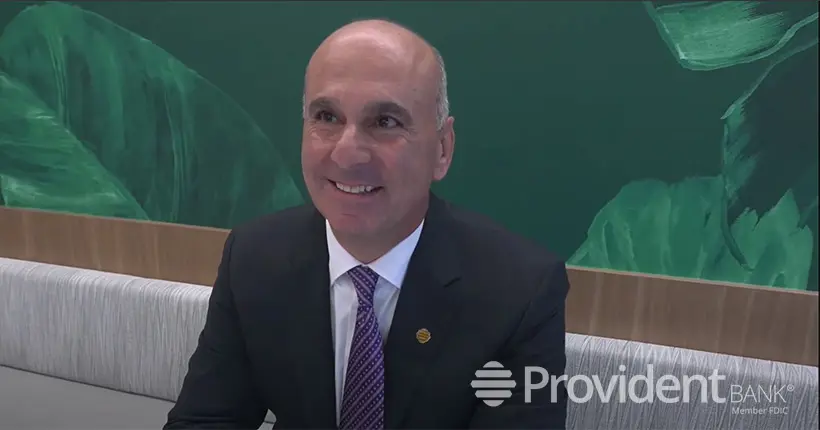
Please note our holiday hours: Thursday, June 19, 2025 - Closed in observance of Juneteenth. Online access to your account(s) will not be affected.


FDIC-Insured - Backed by the full faith and credit of the U.S. Government

FDIC-Insured - Backed by the full faith and credit of the U.S. Government
 VIEW ALL EDUCATION & INSIGHTS
VIEW ALL EDUCATION & INSIGHTS
May 18, 2015
Member Voices: Mary Repke

We’re continuing “Member Voices,” a series where our Cash Management LinkedIn forum members can share their stories, with Mary Repke of Annin Flagmakers.
6 Tips For Starting Your Own Business
Starting your own business is a very empowering opportunity and is usually built on a strong foundation of your many years in business and your professional background. As with any new business venture, there are various considerations that need to be addressed in making the decision, and you need to do your due diligence. Here are 6 tips based upon my personal experience that will help you along the way.
1. Be Honest With Yourself
When you initially decide to start your own business, you need to have an honest talk with yourself. Think about what is important in your life, both professionally and personally, and build those factors into your business model.
I come from a strong corporate background with companies that are category leaders. In each position, I was involved with product development, sales, and marketing. My responsibilities typically required a lot of travel, and like most business women, I was frustrated by the airlines’ “1 bag” rule. How was I supposed to carry my purse and my laptop on the plane?
I had a burning need to create a better business bag for women! I figured if I had this need, then every other business woman must have the same need. As a marketer, I knew that this alone would be an uneducated premise for starting a business. So whenever I traveled, I conducted research – asking business women what they needed and wanted in a business bag.
I knew that my background gave me the skills to handle every aspect of creating and bringing a product to market. However, I also knew that I didn’t have background as a CFO. And I was about to enter a category that I didn’t have any experience in – the only experience I had was as a consumer.
I was honest with myself and clearly identified my strengths and weaknesses. I knew I could really work my strengths and decided to engage experts to address my weaknesses. I was ready!
2. Create A Business Plan
Define, in very narrow terms, what it is you want to do and then decide whether you can make a living doing it. You need to build a cash flow model.
I was always a risk taker in my career so taking this risk didn’t seem that daunting to me. However, I wasn’t going to take a leap of faith without doing the necessary research and initial development needs to determine the viability of my business concept.
It meant that starting my business became my second job and over a 2-year period I began working nights and weekends on my business plan, market research, and product design. I took vacation days or added a day onto a business trip when I needed to attend a trade show, meet with vendors and advisors, or complete other due diligence to deliver proof of concept.
If your business idea is more of a service provider business, you would use this same approach but instead of giving birth to a finished product, you would be creating your initial client list so you can replace your monthly income needs.
3. Time To Answer The “Big Questions”
Doing this while you are still at your day job will show you how passionate you are about your business and if you really have what it takes to be self-employed.
Now, the tough decisions come. Should I quit my job and launch my business or should I take a slow and steady approach? These are big questions that only you can answer and it really depends on your risk appetite and your financial backing.
4. Re-evaluate Your Business Model
I opted to take the leap of faith after three years of validating my product, my market, and my ability to run a business. My line was rapidly successful until the unknown and unexpected happened in 2008…the recession. This one little event disrupted every factor of my business model from consumers and customers to funding.
5. Re-invest In Your Business
As your grandmother used to say, always save for a rainy day. As your business takes off and you need to reinvest in your business, one of those investments needs to be the business savings account to carry you through the downpour. While I continued to grow my business and changed course a bit, I reassessed my original premise for starting my business.
6. Be Flexible
I decided to use my professional experience with marketing and e-commerce and do some consulting work to supplement my income. I dedicated one to two days a week and some weekends as needed to my consulting job and was able to focus on my business three days a week. It was a consuming time but I was passionate about what I was doing.
A few years into this, I decided that I could balance both jobs and one of my consulting gigs turned into a full time offer back to corporate. It was a gift that I gladly accepted. Today, I’m a Sr. Vice President of Sales & Marketing at a great company and I still run my own business, Coakley Business Class, with the help of some talented virtual resources.
The Reward
Let’s face it, being known for something is enjoyable. People may start referring to you as the marketing guy, or the retail maven, or the software guru. Whatever it is you’re recognized as, it’s fun to build that brand and earn that recognition. Although I’m the Founder & CEO of Coakley Business Class, I’m known as the “Chief Bag Lady.” And that feels good!








 Views
Views


 Views
Views

 Go Back
Go Back











